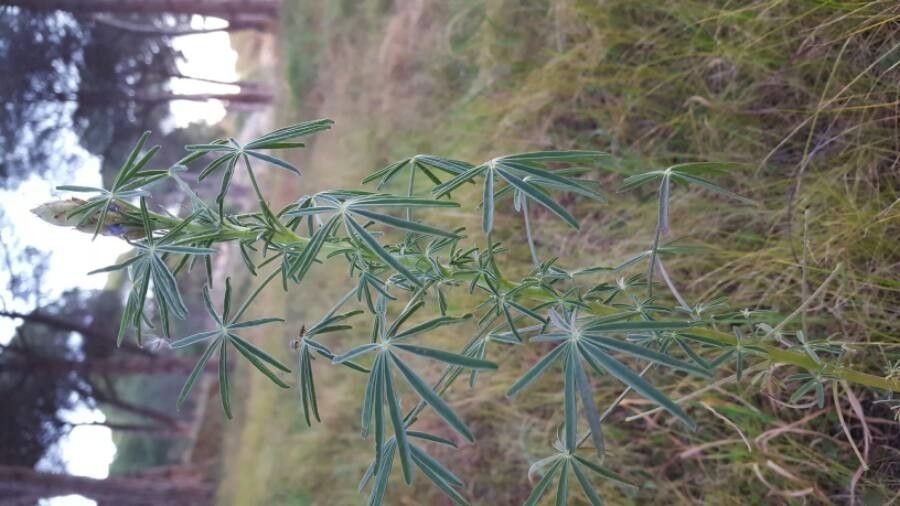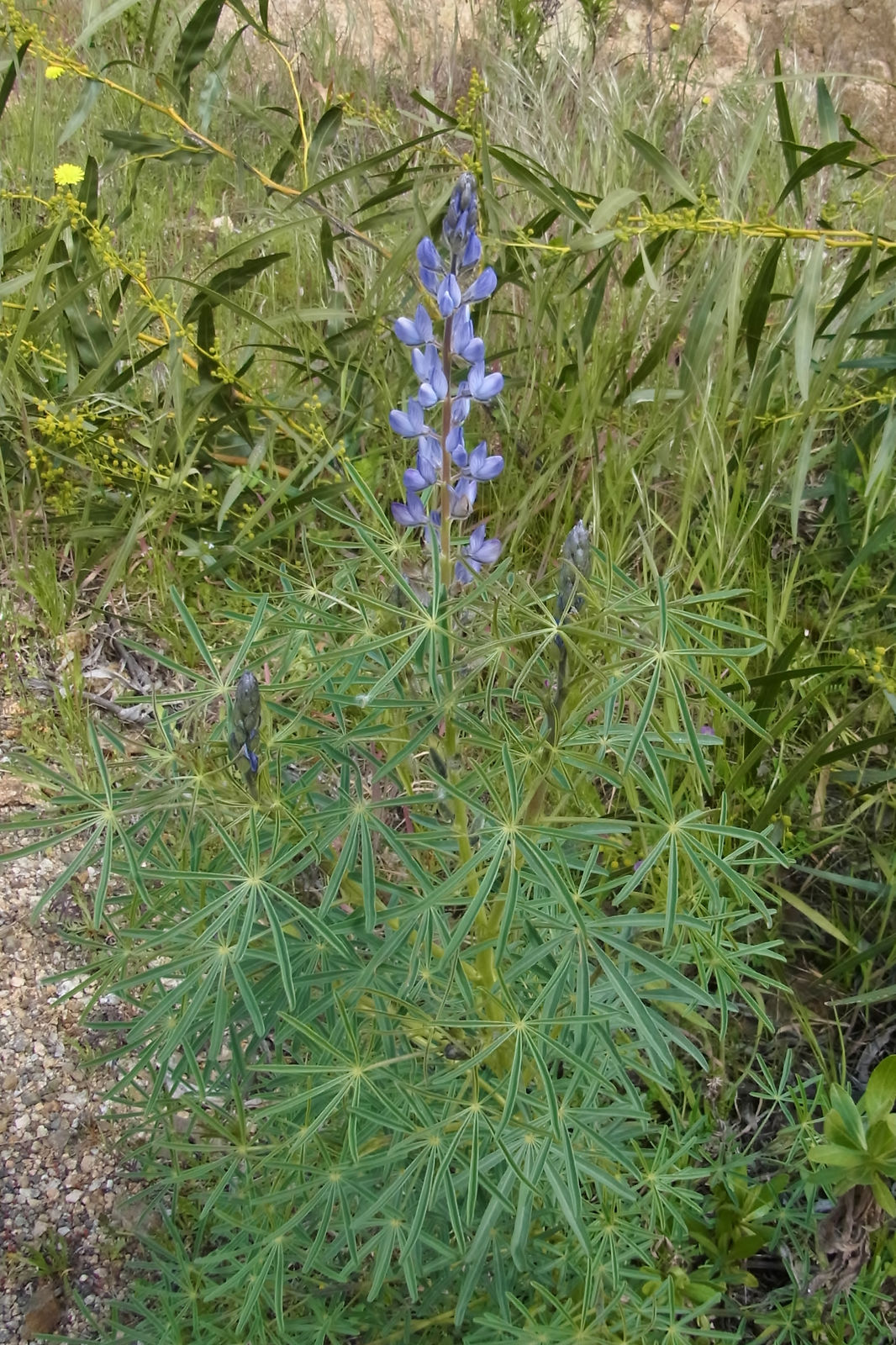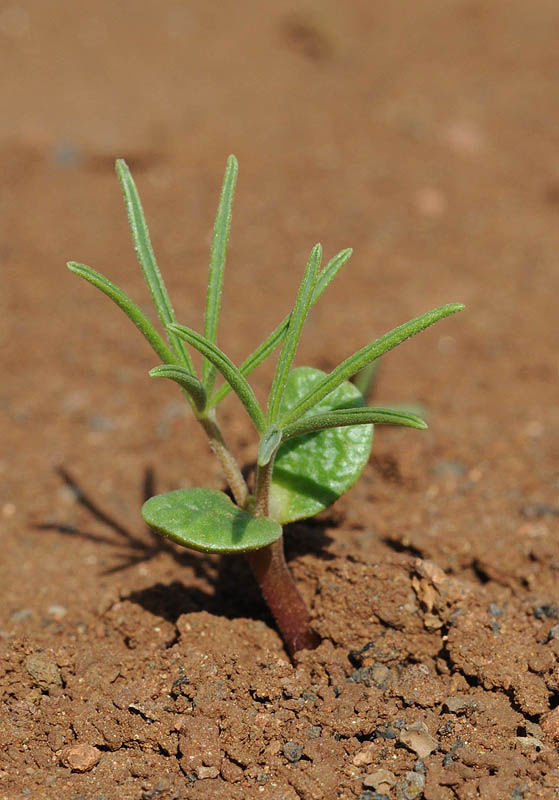Narrow-leaved Lupin
lupinus angustifolius
Also known as: ["Blue Lupin","Narrowleaf Blue Lupine"]
Overview
A leguminous plant with slender, pointed leaves and spikes of blue flowers, often cultivated for forage and soil improvement.
Benefits & Perks
["long-flowering","wildlife attractant (bees, butterflies, birds)","drought tolerant","nitrogen-fixing"]
Botanical Classification
| Phylum: | Magnoliophyta |
| Class: | Magnoliopsida |
| Order: | Fabales |
| Family: | Fabaceae |
| Genus: | Lupinus |
| Botanical Name: | Lupinus angustifolius |
Plant Characteristics
Basic Information
- Category: Flowers
- Suitable Location: garden bed or container in a sunny spot
- Suitable For:
- Is Weed: No
- Allergenicity: low
Environmental Needs
- Climate: {"temperatureRange":"5–30°C"}
- Hardiness: {"zones":"6–9"}
- Misting: rarely required, only if ambient humidity is very low
- Drainage: Fast-draining to prevent waterlogging.
- Soil Type: Well-draining, loamy soil with added organic matter; can tolerate slightly sandy conditions.
Maintenance Level
- Maintenance Level: moderate
- Toughness Level: moderate
- Pruning Frequency: After flowering; as needed to remove dead or damaged growth.
- Pruning Intensity: Light to moderate; avoid heavy pruning unless necessary for rejuvenation.
Care Details
Ideal Sunlight Coverage:
Full sun (6–8 hours/day); tolerates partial shade but may produce fewer flowers.
Sunlight Tolerance Tips:
Acclimate plants gradually to intense sunlight; protect from harsh afternoon sun in hot climates; ensure adequate ventilation if grown indoors.
Care Requirements
Care Difficulty
moderatemoderate
Sunlight
full sun to partial shade
Rotate plants for even light exposure; use sheer curtains to filter intense sun; avoid placing near heat sources.
Watering
every 7–10 days during active growth, reduce in winter
Water thoroughly but infrequently; ensure good drainage; avoid wetting foliage to prevent fungal diseases.
Soil
well-draining, loamy soil with moderate organic content
pH: Slightly acidic to neutral (pH 6.0–7.0).
Test soil pH annually; avoid over-amending with organic matter in heavy soils; ensure consistent moisture retention.
Temperature
Prefers cool to moderate temperatures (60–75°F/15–24°C); can tolerate light frosts but avoid prolonged freezing.
Avoid sudden temperature fluctuations; protect from drafts; maintain consistent humidity levels.
Fertilizing
every 4–6 weeks during growing season with balanced liquid fertilizer
Apply fertilizer after watering to prevent root burn; flush soil occasionally to prevent salt buildup; use organic options like compost tea.
Propagation
Methods
Seed propagation is most common; stem cuttings can also be used for some varieties.
Step-by-Step Propagation Guide
- Prepare medium.
- Sow seeds or take cuttings.
- Maintain consistent moisture.
- Transplant once rooted.
Best Time: Spring or early summer when the plant is actively growing.
Environment
Warm (65–75°F/18–24°C), humid, and bright but indirect light; protect from drafts.
Medium
Well-draining seed starting mix or a mix of peat and perlite for cuttings.
Hormone
Rooting hormone is optional for seeds but recommended for stem cuttings.
Timeline
Seeds germinate in 2–3 weeks; cuttings root in 3–6 weeks and may take several months to establish.
Tools Needed
Seed trays, rooting hormone, pruning shears, misting bottle, heat mat (optional).
Quick Tips
Use fresh seeds for best germination; keep cuttings out of direct sun; maintain high humidity for cuttings.
Pruning & Repotting
Pruning Guide
Method
Deadhead spent flowers; trim back leggy stems to promote bushier growth.
Pruning Plan
Light pruning to remove spent flowers and encourage reblooming; occasional shaping to maintain form.
Tools
Pruning shears, clean scissors, gloves.
Checklist
Sterilize tools; prune in early morning; remove only dead or weak growth.
Repotting Guide
Best Season
Early spring before new growth begins.
Pot Size
One size larger pot (e.g., +2 inches in diameter); ensure good drainage.
Method
Remove plant gently; trim any circling roots; repot in fresh, well-draining soil with a slightly larger pot.
Suggestions
Repot every 2–3 years or when roots fill the container; beneficial for young plants to support growth.
Checklist
Prepare new pot with drainage holes; use fresh soil mix; water lightly after repotting.
Advanced Care Tips
Watering Mastery
Watering Checklist
Check soil moisture before watering; water early in the day; ensure pots have drainage holes.
How to Apply Water Properly
Water at the base of the plant, targeting the root zone; water until it drains from the bottom; avoid overhead watering to minimize leaf wetness.
Watering Schedule Tips
Water deeply once the top inch of soil is dry; reduce frequency in winter to prevent root rot.
Soil Improvement
Add compost or well-rotted manure for fertility; mix in perlite or sand for drainage; avoid heavy clay soils.
Temperature Stress Management
Signs of Temperature Issues
Wilting, yellowing leaves, stunted growth, or flower bud drop in extreme heat or cold.
Cold Stress
Slows growth, may cause leaf discoloration, and can lead to root damage if frozen.
Solution: Mulch around the base to insulate roots; move potted plants to sheltered locations; avoid overwatering in cold conditions.
Hot Stress
Leaves may scorch, flowers may wilt, and growth can become stunted in excessive heat.
Solution: Provide shade during peak sun hours; increase watering frequency; use mulch to retain soil moisture.
Fertilizing Guide
Fertilizing Checklist
Check fertilizer label for NPK ratio; water before fertilizing; apply evenly around the root zone.
Fertilizing Method
Use a balanced, water-soluble fertilizer diluted to half strength every 4–6 weeks during active growth; avoid fertilizing in winter.
Common Problems & Solutions
Toxicity Warning
Cats
ToxicCats are also susceptible to the toxic effects of quinolizidine alkaloids found in Lupinus angustifolius. The alkaloids can induce neurological and gastrointestinal symptoms, posing a serious health risk.
⚠️ Symptoms:
🌿 Toxic Parts:
⚡ Toxic If:
if eaten
Dogs
ToxicThe quinolizidine alkaloids in Lupinus angustifolius are toxic to dogs, affecting their nervous and gastrointestinal systems. These compounds can cause significant physiological distress and require prompt veterinary attention.
⚠️ Symptoms:
🌿 Toxic Parts:
⚡ Toxic If:
if eaten
Humans
ToxicLupinus angustifolius contains quinolizidine alkaloids, primarily lupanine, which are toxic to humans. Ingestion can lead to neurological and gastrointestinal disturbances due to the alkaloids' effects on the central nervous system and digestive tract.
⚠️ Symptoms:
🌿 Toxic Parts:
⚡ Toxic If:
if eaten
Frequently Asked Questions
Q: Is Lupinus angustifolius toxic to pets?
A: Yes, it is mildly toxic to dogs and cats if ingested.
Q: Does this plant attract wildlife?
A: Yes, it attracts bees, butterflies, and birds due to its nectar-rich flowers.
Q: Can Lupinus angustifolius improve soil quality?
A: Yes, it is a nitrogen-fixing plant that enriches soil with nitrogen.
Quick Reference
| Family: | Fabaceae |
| Care: | moderate |
| Light: | full sun to partial shade |
| Water: | every 7–10 days during activ |
Get Expert Care Tips
Download the Plantious app for personalized care reminders and plant identification!
Google Play App Store








